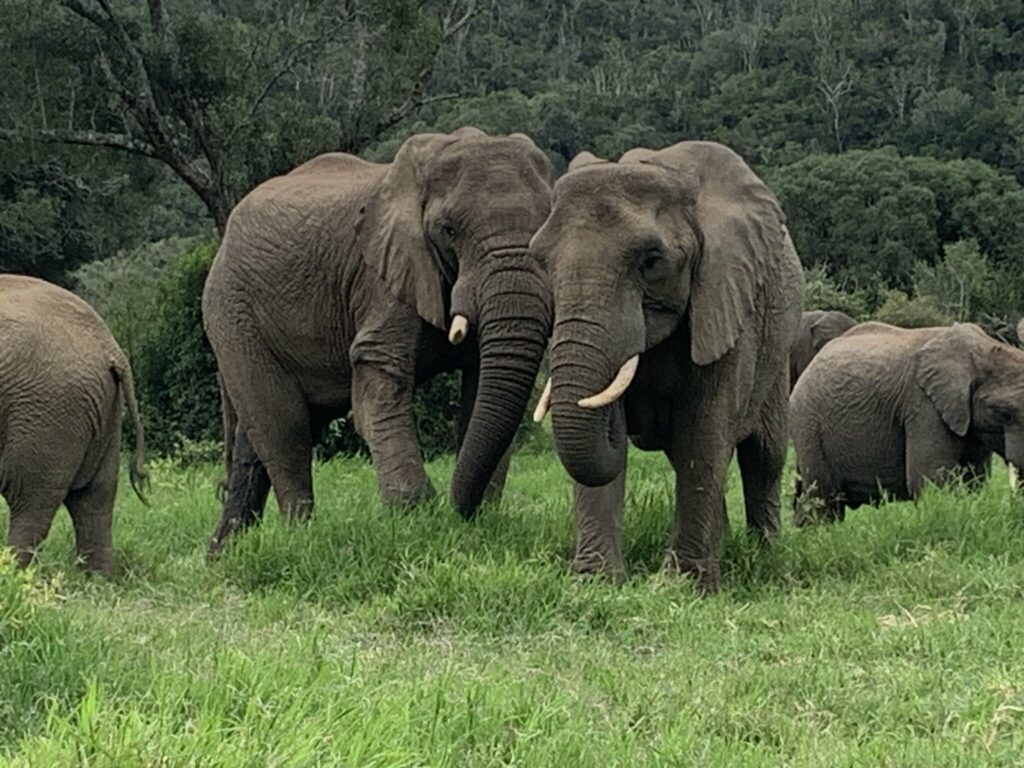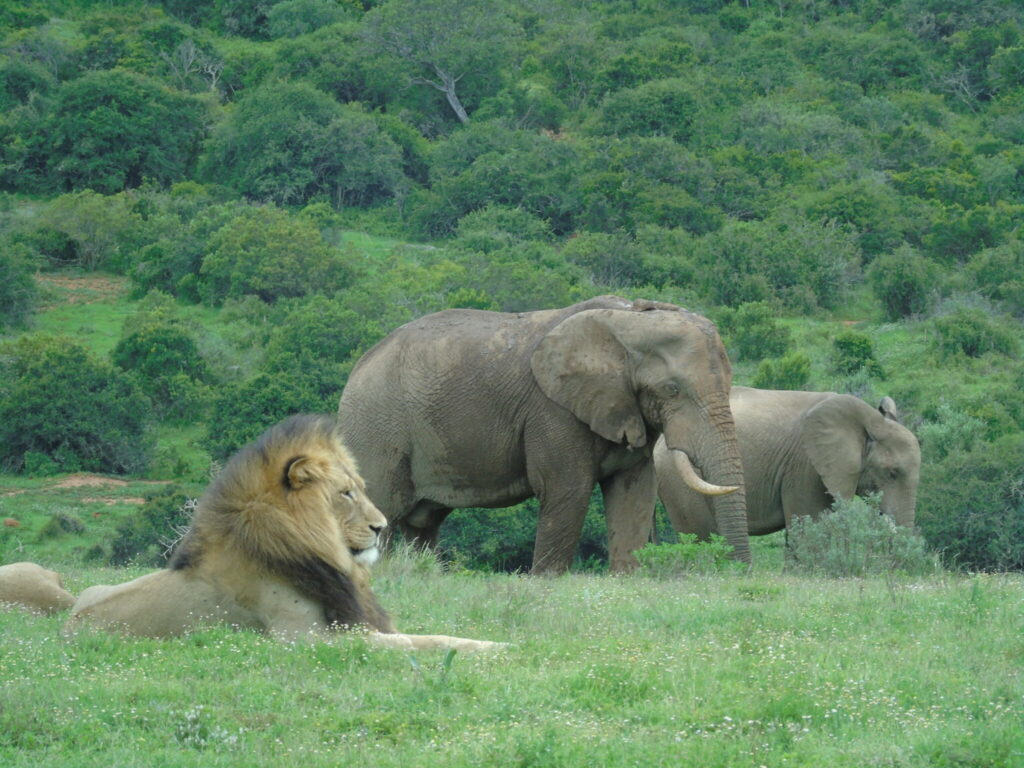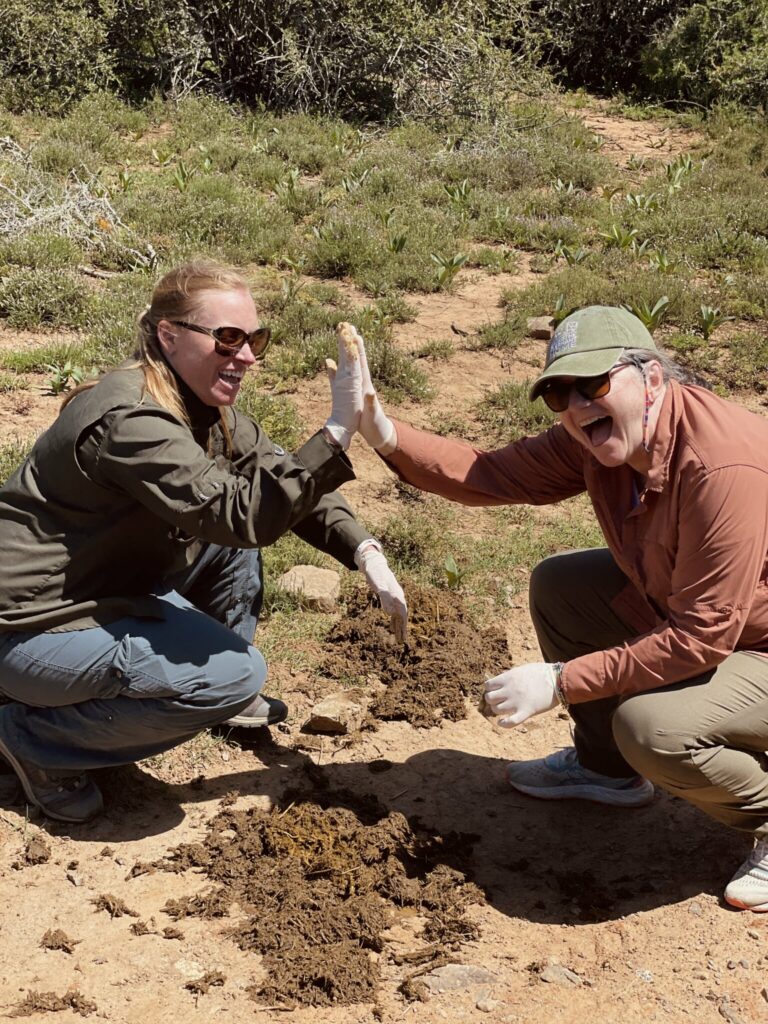What brings 8 strangers from 6 different countries together for 10 days? A love of elephants, a passion for conservation and a deep desire to give their time and energy to something worthwhile. The February BTEH Elephant Research Project is underway and we are out in the reserve tracking the elephants and monitoring their behavior (and collecting some dung along the way!).
By Nancy Griffin, March 3, 2023
Several members of the Elephant herd on the Kariega Game Reserve, with representation from either side on a property fence, were collared 6 months ago by another team of Elephant Researchers. Tracking devices are used to monitor their movements before and after fences removal, as Kariega Game Reserve is preparing for a large corridor project to increase habitat connectivity and provide more space for elephants and other species. We are now here to carry on the work started by the first group and generate the data that the collaring project began. Behavioral data, tracked through an app called Zoomonitor, allows the researchers to generate an understanding of the herd’s activity and energy expenditure now as a baseline so that when a change happens, like the upcoming fence removal, a comparison can be made to understand the impact of such changes. In addition to adding to the overall understanding of elephants’ actions, habits and manners, this data will inform future decisions that are made about the welfare of elephants.

There is a wide variety of backgrounds, interests and life stories among our group, and it is this diversity of thought and approach that makes this an interesting experience. Nothing helps you get to know your peers better than 8 hours in an open-air vehicle tracking elephants who, on one day are there at every turn and the next, are only recognized by the shaking of thick bushes and trees as these enormous and beautiful animals are invisible in the brush.

14 minutes is both a flash of an eye and very long time! 14 minutes is the monitoring time for each behavioral session. We work in teams of two or three, one watching the elephant with keen attention, calling about continuous or instance behaviors while our partner swipes and taps the app to make sure we are catching all the data. In a herd, things can move fast – an elephant goes on alert, ears and truck up as they pick up some movement or potential threat, and then they are back to grazing or browsing. Sub-adult males jostle each other play sparring to get ready for the real thing when they get bigger. There’s lots to watch … most times. And then sometimes there is 14 minutes of grazing, interspersed with a few moments of locomotion. Not always rapid-fire action but its always wonderful to be able to be so close to watch and observe these amazing creatures.





The next Elephant Field Program has been planned around the end of September – early October 2023, when Kariega’s internal fences will be removed and two herds of elephants will likely meet for the first time. For more information about this unique expedition, please visit:
